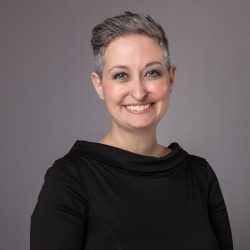
If you’re reading this, your child or a child of a friend or relative has probably just been diagnosed with Autism. You’re also probably wondering what that means, and how your child’s therapist, psychologist, and/or mental health worker came to that diagnosis. This tip will help you understand the diagnostic criteria therapists and psychologists use to diagnose autism, the prevalence rates, and basic information on treatment options. Autism is a Pervasive Developmental Disorder (PDD). Pervasive Developmental Disorders are a range or “spectrum” of disorders that are characterized by severe and pervasive impairment in developmental functions such as social interaction, communication skills, and presence of stereotyped movements or behaviors. The spectrum of PDD includes Autism, Asperser’s Disorder, Rett’s disorder, and Childhood Disintegrative Disorder. PDD symptoms are usually noticed early in childhood, when developmental milestones are not reached. Sometimes, these disorders also occur with some degree of Mental Retardation or other medical and neurological disorders; however, this is not always the case.
PDDs are a group of complex disorders of brain development, which are diagnosed by psychiatrists, pediatricians, psychologists, and/or therapists. These professionals use a guidebook called the DSM-IV-TR (Diagnostic and Statistical Manual of Mental Disorders version 4), which is published by the American Psychiatric Association and covers all categories of mental health disorders for both adults and children. The categories of symptoms for each diagnosis in the DSM-IV-TR have been studied and tested statistically to determine prevalence rates, which gender is most commonly affected, typical ages associated with certain disorders, and effectiveness of treatment for each disorder (DSM–IV–TR (2000) 4th ed., text rev.). Please note that in the next year or so, the DSM-V will be published and it is rumored that the diagnostic criteria for Autism has become far more narrow so that many children currently meeting this diagnosis may not in the future.
As of now, the DSM-IV-TR (2000) requires that individuals need to meet the following criteria in order to be diagnosed with autism. A child will need to meet 6 or more of the following criteria to receive a diagnosis of Autism. First is “qualitative impairment in social interaction as manifested by at least two of the following.” This criterion goes on to explain that the child may have (1.a) impairment in use of non-verbal communication skills such as lack of eye contact, facial expression, body postures and gestures. Next is (1.b) failure to develop age appropriate peer relationships. Also under this criterion a child may experience (1.c) “a lack of spontaneous seeking of enjoyment” which means that they won’t naturally point out objects or activities that interest them to another person. Lastly under criterion 1 is (1.d) lack of social or emotional reciprocation such as empathy or saying “ouch” when someone else gets a “boo-boo (DSM–IV–TR (2000) 4th ed., text rev.).”
The second criterion is “qualitative impairments in communication as manifested by at least one of the following.” Criterion 2 includes (2.a) delay in or total lack of verbal communication meaning that the child will not talk or even use another means of communicating needs such as miming or gesturing. In children who have adequate speech (2.b) there will impairment in the ability to initiate conversations with others. To meet criterion two, there may also be (2.c) stereotyped and repetitive use of language. This means the child would use the same words or sounds over and over again without meaning. The last descriptor of criterion 2 is (2.d) lack of varied, spontaneous make-believe play or play including others (DSM–IV–TR (2000) 4th ed., text rev.).
Criterion 3 states “restrictive, repetitive, and stereotyped patterns of behavior, interests, and activities as manifested by at least one of the following.” (3.a) includes preoccupation with one or more stereotyped and restrictive patterns of interest that is abnormal due to the intensity or focus the child has with it. This would look like a child spending hours upon hours rocking back and forth or being fixated on spoons. Children may also exhibit (3.b) inflexible adherence to specific, nonfunctional rituals or routines such as arranging toys by color, mixing them up and rearranging them multiple times before being able to move on to another task. The next description for criterion 3 is (3.c) which includes stereotypes and repetitive mannerisms such as hand flapping, twisting, or whole body movements. Lastly, (3.d) states that a child may experience persistent preoccupation with parts of objects, for example: a zipper on a pair of pants. The final two DSM-IV-TR criteria of Autism state that these delays or abnormal behaviors/functioning in at least one area (social interaction, language use for social communication, and symbolic play) must be present prior to age three and that the disturbance is not better accounted for by another PDD or mental disorder (DSM–IV–TR (2000) 4th ed., text rev.).
There are different reports of what the actual prevalence rates are for autism spectrum disorders and PDD depending on where you read the information. This tip has gathered prevalence rates from two credible sources: The DSM and CDC. According to the DSM-IV-TR, the manual used by therapists, psychiatrists, and psychologists to diagnose children with autism, the prevalence rate shows that autism is a disorder that affects about 1 out of every 2,000 individuals (DSM–IV–TR (2000) 4th ed., text rev.). A 2008 report from the CDC (the U.S. Centers for Disease Control and Prevention) identifies that around 1 in 88 American children have a diagnosis that places them on the autism spectrum. Other studies conducted by the CDC also show that autism is three to four times more common among boys than girls. An estimated 1 out of 54 boys and 1 in 252 girls are diagnosed with autism in the United States (CDC, 2008).
Remember a child does not need to meet all the criteria listed for autism to obtain a diagnosis, just 6 or more. Therefore, one child with autism may have behaviors, skills, challenges, and communication that looks very different from another child also diagnosed with autism. This is why PDDs are called a spectrum of disorders because the same diagnosis will look different and affect a child and family differently depending on the symptoms each individual child exhibits. A trained professional such as a pediatrician, psychiatrist, therapist, or psychologist, preferably a team including both, will be necessary to make an appropriate diagnosis and treatment recommendations.
Children with autism will experience challenges relating to others, playing, and functioning in school due to their developmental delays; however they will also have many strengths such as creativity and kindness that can be enhanced with proper treatment. Early intervention is key to treating autism, which means that children and families will benefit most from treatment when it is received as soon as possible and in as many life areas as possible. Treatment can be provided to the individual diagnosed with autism, the family, and in a home, school, and/or community setting. Applied Behavior Analysis (ABA) is the most common and the most empirically valid form of treatment for autism spectrum disorders and PDD. Parents and therapists also report success with other commonly used behavioral therapies, including “floortime,” pivotal response therapy, verbal behavior therapy, and PECS (autismspeaks.org). Children diagnosed with Autism qualify for assistance through their schools in the form of an IEP (Individualized Education Plan). For many parents the diagnosis of Autism can be overwhelming and comforting at the same time. At least there is a name for what your child is experiencing, and help is available. Feel free to call us and schedule an appointment with one of our therapists who specialize in working with children who have autism and their families.
References
American Psychiatric Association. (2000). Diagnostic and statistical
manual of mental disorders (4th ed., text rev.). Washington, DC: Author.
Centers For Disease Control and Prevention. (2008). Prevalence of Autism Spectrum Disorders. Retrieved from: http://www.cdc.gov/mmwr/preview/mmwrhtml/ss6103a1.htm?s_cid=ss6103a1_w






















